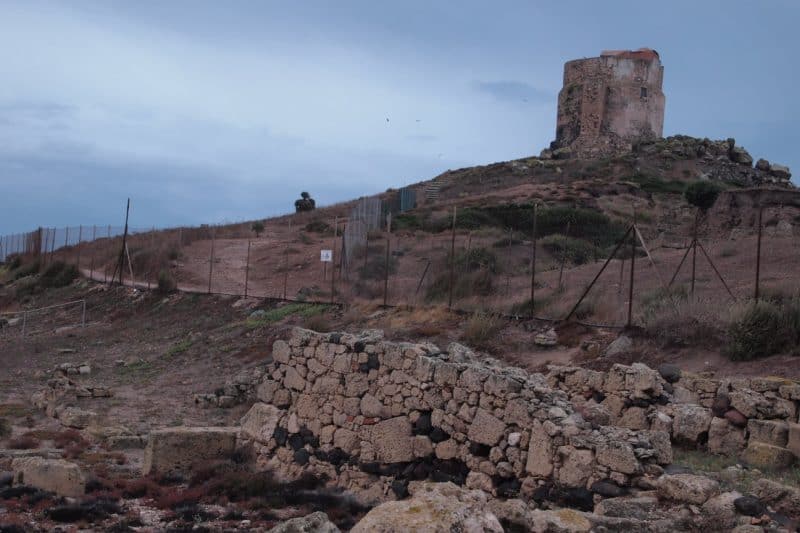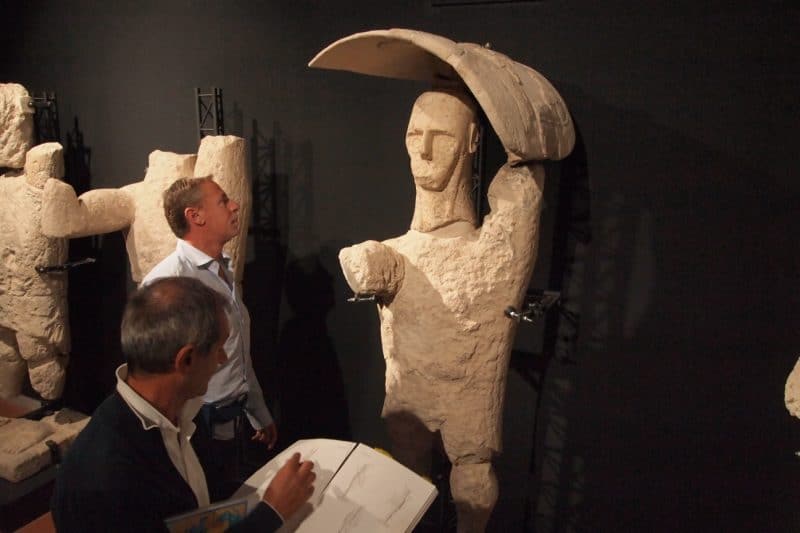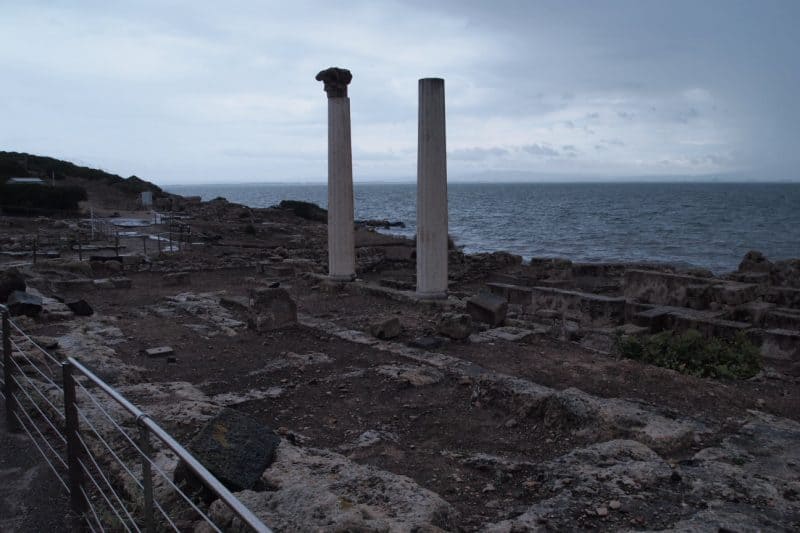In Cabras, We Discover Many Ways to Connect with the Sea and History

I’ve spent this week in the town of Cabras, Sardinia, moving between our city center hotel and various attractions relating to the Marine Protected Area that encompasses the sea all around the island’s west coast. We’ve gotten a rare opportunity for a trip like this…to spend time in one town and get to see everything that’s available for those interested in eco-touring, history and gastronomy.

The usual long bus trips have been replaced by short walks in town to dinner, and short drives beside the lagoon toward the beautiful Cape of San Marco that stretches out capped by a lighthouse atop 60 foot cliffs over the ocean. One one side there are perfect surfing breakers, and blue water, and on the other, small ripples and turbidity that turns the water dark green.
Today we got our history lesson at the Archaeological Museum of Cabras with Renzo Carrus serving as our guide. And when he says ‘We’ referring to the ongoing excavations of the famous Giants of Mont’e Prama, he’s not kidding. He was there back in the early days in the 1970s when the first found fragments. Today he leads tours with the zeal of a student, sharing many details about the finds that have barely scratched the surface of the large Phoenician and Roman settlement discovered at Thassos.

Forty years later, in Cabras’ museum, you can see these re-assembled life-size giants who once lined the road at the settlement of Thassos on Cape San Marco. The museum houses archeological finds from Cuccuru Is Arrius from the Nuragic era, from Tharros dating back to Phoenician-Punic and Roman times, and from the shipwreck near the island of Mal di Ventre. This contained lead bars which were scattered in the seabed with huge anchors and other debris.
We sampled some Vernaccha wine that’s been named in honor of the town’s famous Giants at Attilio Contini, a mid-sized winemaker that specializes in this unusual variety. It’s a white wine that’s aged–we drank some from 2001, and it has a slightly red color and a strong taste. As our guide Davide Beccu described it, a ‘meditation wine,’ one that often spurs conversation and contemplation because of its unusual taste and color.
A stop at the Centro di Recupero di Sinis was another way to connect to eco-tourism in Sinis. Here, marine biologists have loggerhead turtles in tanks in various stages of recuperation, they feed them daily rations of sardines and help them get better with a goal of sending them back to the ocean some day. The injuries are often from fishing lines, but one turtle was there because he was living in an aquarium and mistreated.
The center studies many other endangered mammals and does research into how plastics and other waste threatens the Mediterranean and the rest of the world’s oceans. Did you know that a disposable diaper takes 450 years to decompose in the ocean? And an aluminum can, 200 years?

